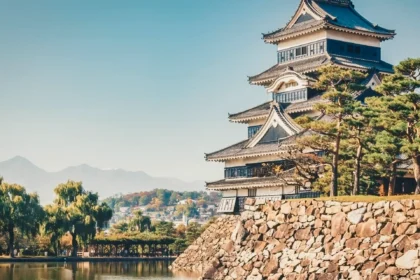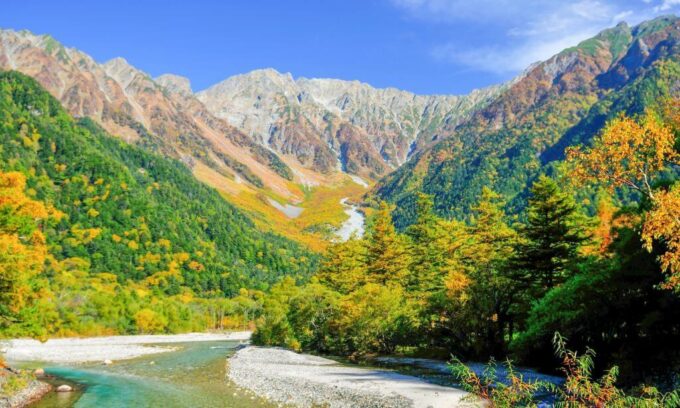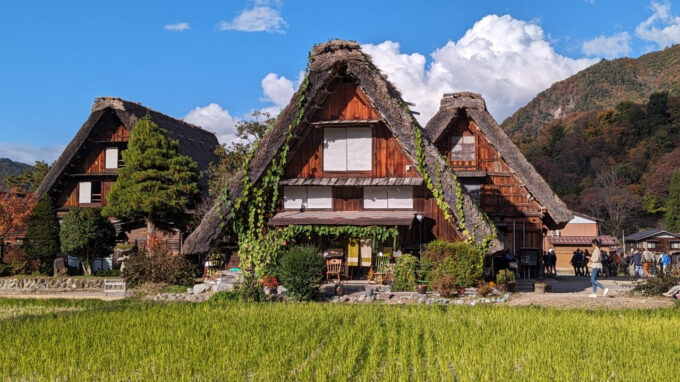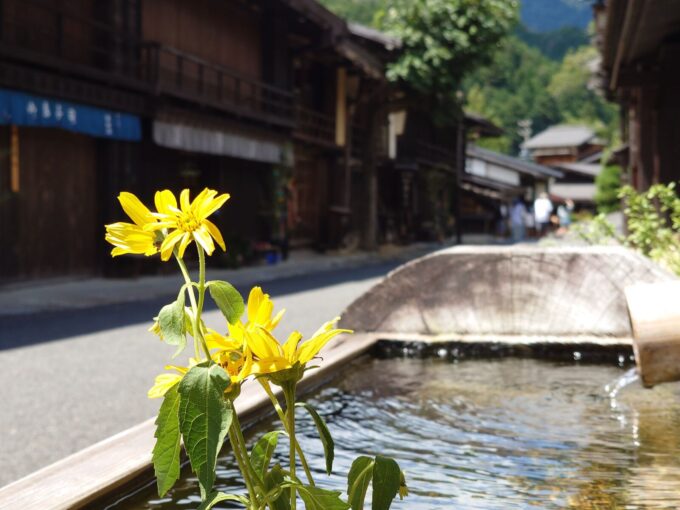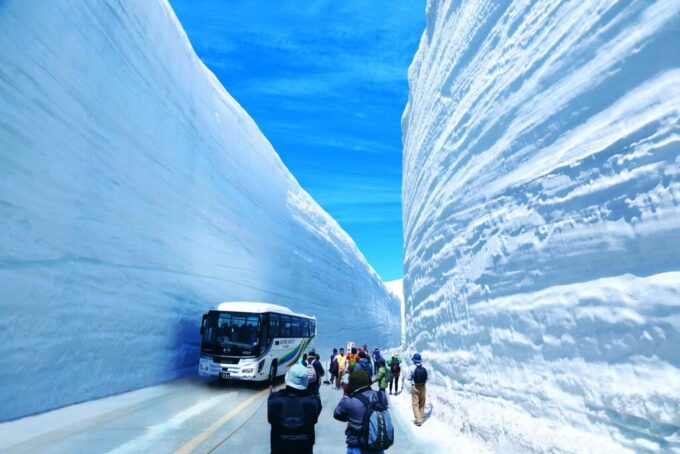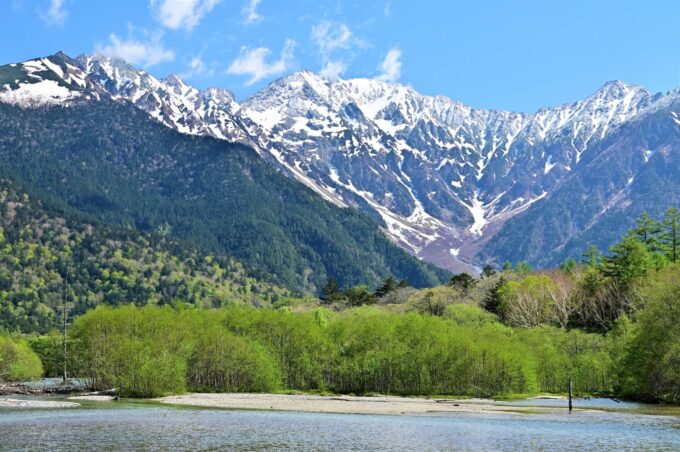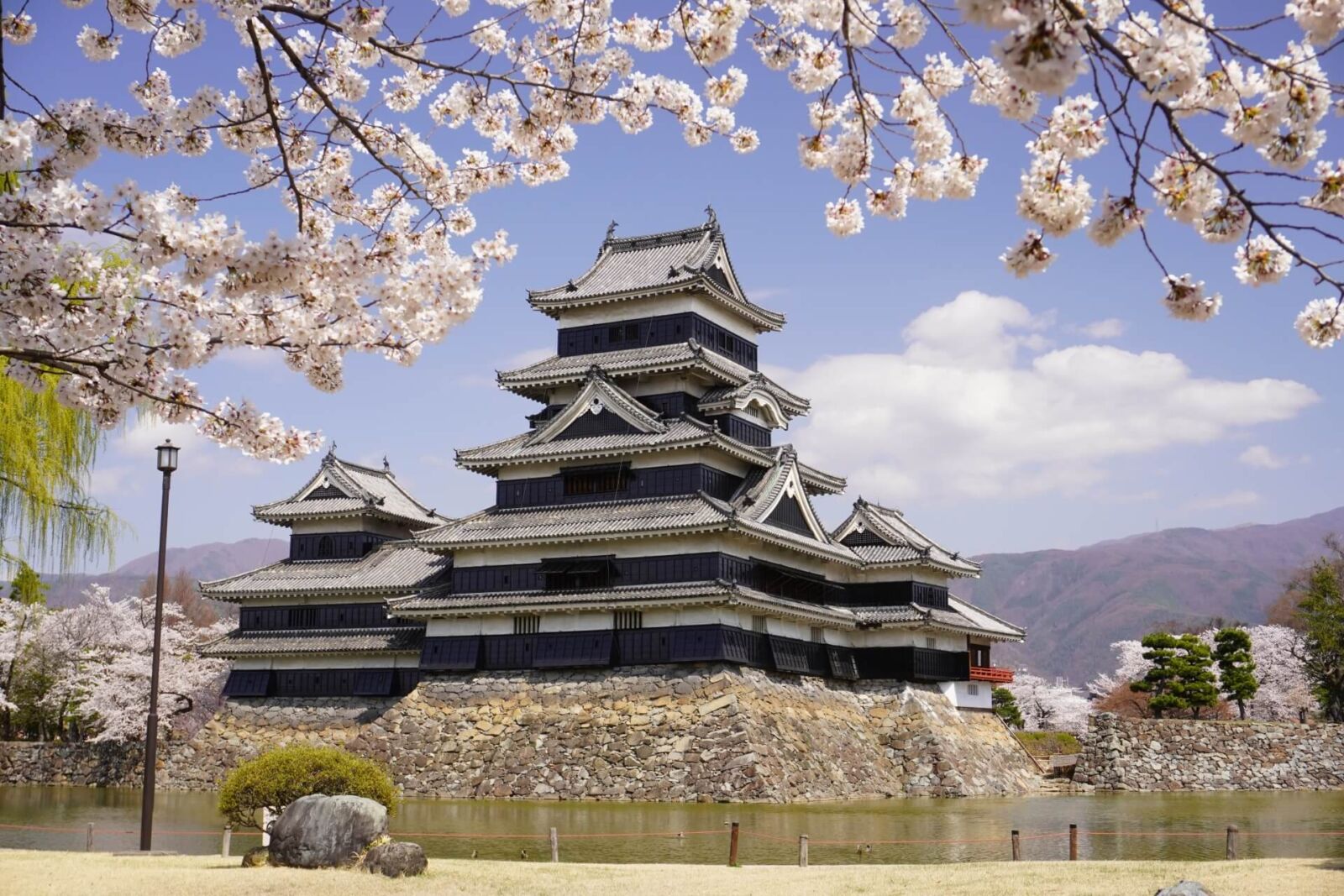
Most famous for its 400-year old castle, Matsumoto is a small but lively city with a rich history, a famous traditional craft industry and burgeoning arts and dining scene. On this page you will find the following information:
-- Recommended Highlights of Matsumoto
-- 25 Things To Do Around Matsumoto & Where To Stay
-- Getting To & From Matsumoto
-- Suggested Day-Trips & Next Destinations From Matsumoto
-- Tours & Charters From Matsumoto
Located in Nagano Prefecture, the city lies in a valley below the high mountain peaks of Japan’s highest mountain range – mountains that have shaped the identity of the Matsumoto for hundreds of years. The iconic Matsumoto Castle is a registered National Treasure and the heart of the city. One of the few remaining original castles in Japan and considered one of the most impressive along with Himeji Castle and Kumamoto Castle. The story of the castle, including its survival, is intimately linked with that of the city itself and the focal point of life in Matsumoto to this day.
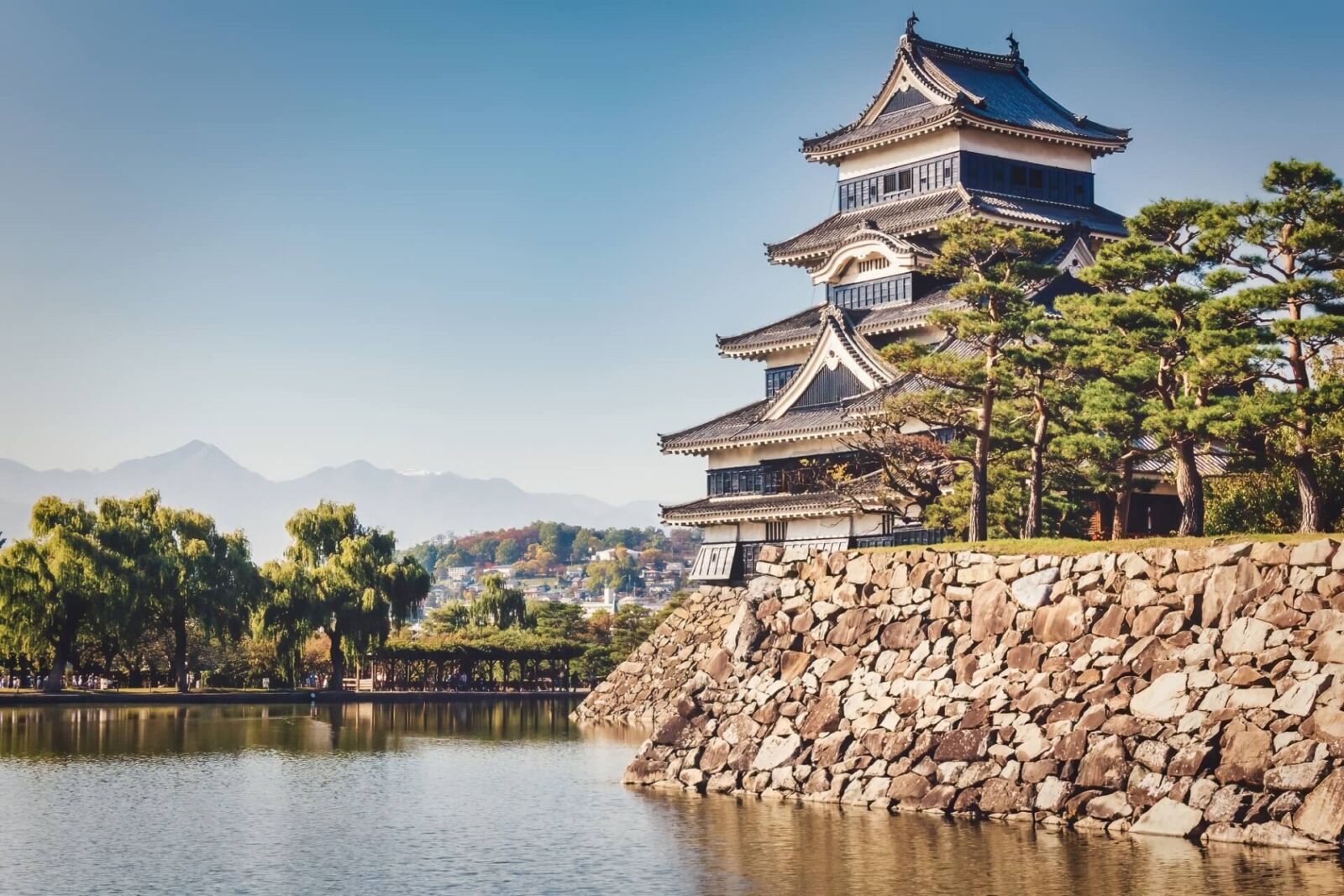
From the castle visitors can wander the picturesque historic streets, home to many great craft shops, cafes, restaurants, bars and galleries. Matsumoto boasts a burgeoning arts scene thanks to its fame as the hometown of one of the world’s most famous contemporary artists, Kusama Yayoi. The Museum City Museum of Art houses a permanent collection of her work, attracting art devotees from all over Japan and the world.
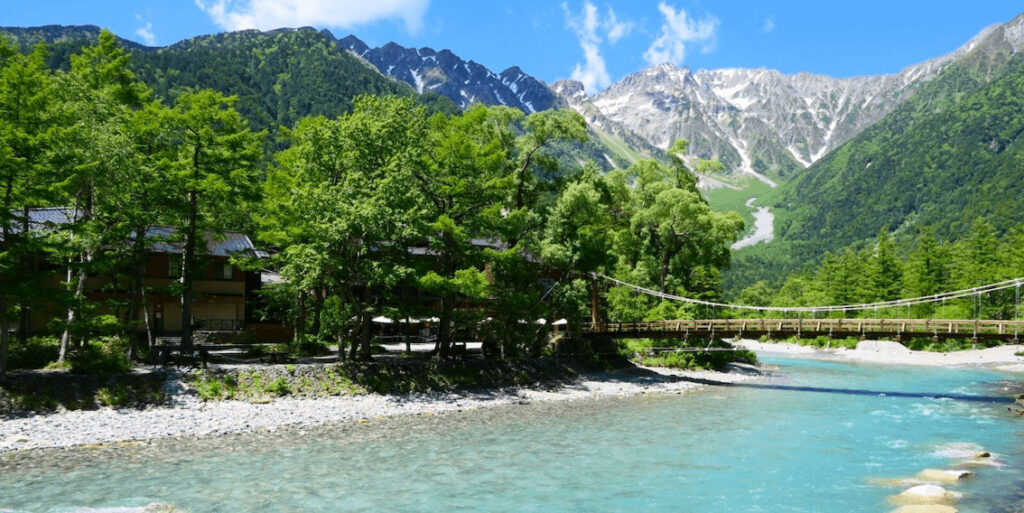
As Nagano Prefecture’s second city, Matsumoto is an ideal destination to itself and starting point from where to head deeper in Central Japan including the nearby North Alps including Kamikochi, Norikura and ski resorts of Hakuba Valley. Whenever you are travelling or wherever you plan to go, we hope this information assists in getting the most out of your time in Matsumoto.
WHERE IS MATSUMOTO?
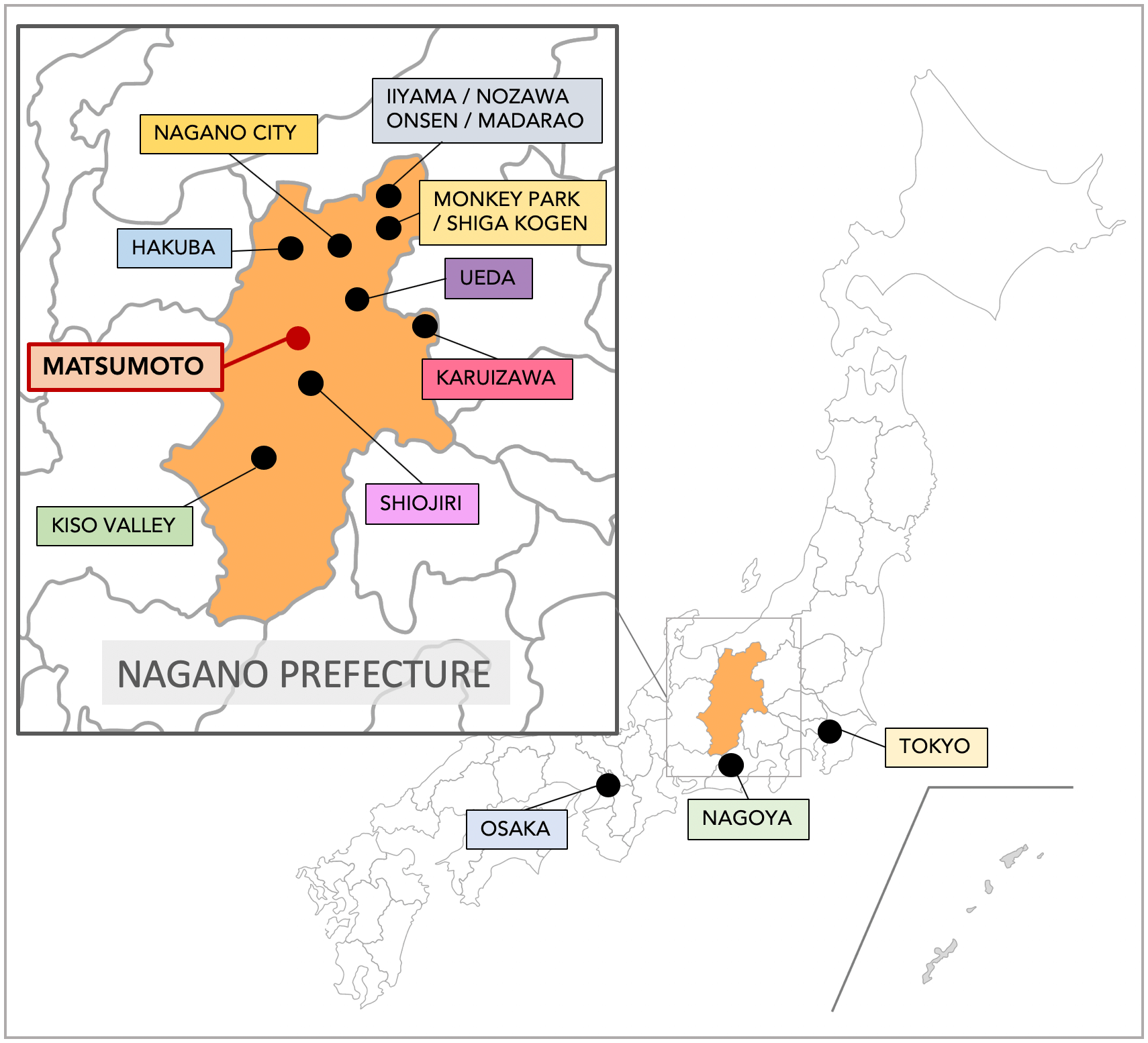
Lying around 225km to the north-west of Tokyo, Matsumoto is the second largest city in Nagano Prefecture. With a population of less than 240,000, the Matsumoto City area accounts for the city itself and an expansive mountainous area within Chubu Sangaku National Park – including the popular outdoor destinations of Kamikochi and Norikura.
To the immediate north of Matsumoto, visitors can head to the tranquil rural enclave of Azumino and a little further on, the ski resorts of Hakuba Valley. The most popular and most international ski resorts in Central Japan, Hakuba has a reputation for great snow, great powder and arguably Japan’s best apres ski. The city is serviced by Matsumoto Station, a convenient stop on services including the Limited Express Azusa running from Shinjuku Station in Tokyo and the Limited Express 'Shinano' running from Nagoya to Nagano – see below for details. A small and livable city, Matsumoto can be easily explored on-foot or using a bicycle.
RECOMMENDED HIGHLIGHTS OF MATSUMOTO
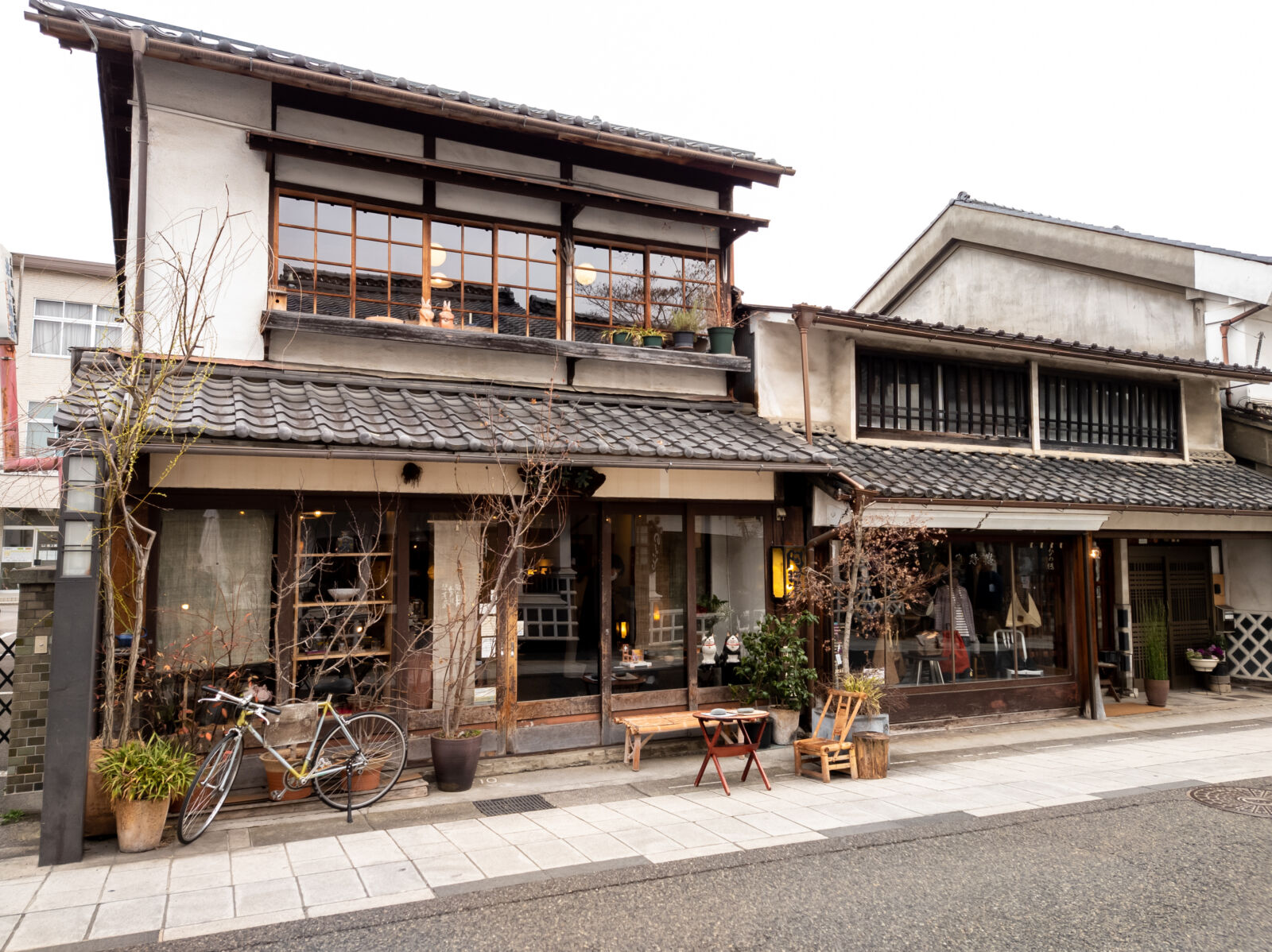
Matsumoto is a small and pleasant city that can be easily explored on-foot or by bicycle. Many visitors come for the castle but once there, discover an engaging and lively city blending its rich history and youthful arts scene. But of course, the obvious place to start is:
MATSUMOTO CASTLE
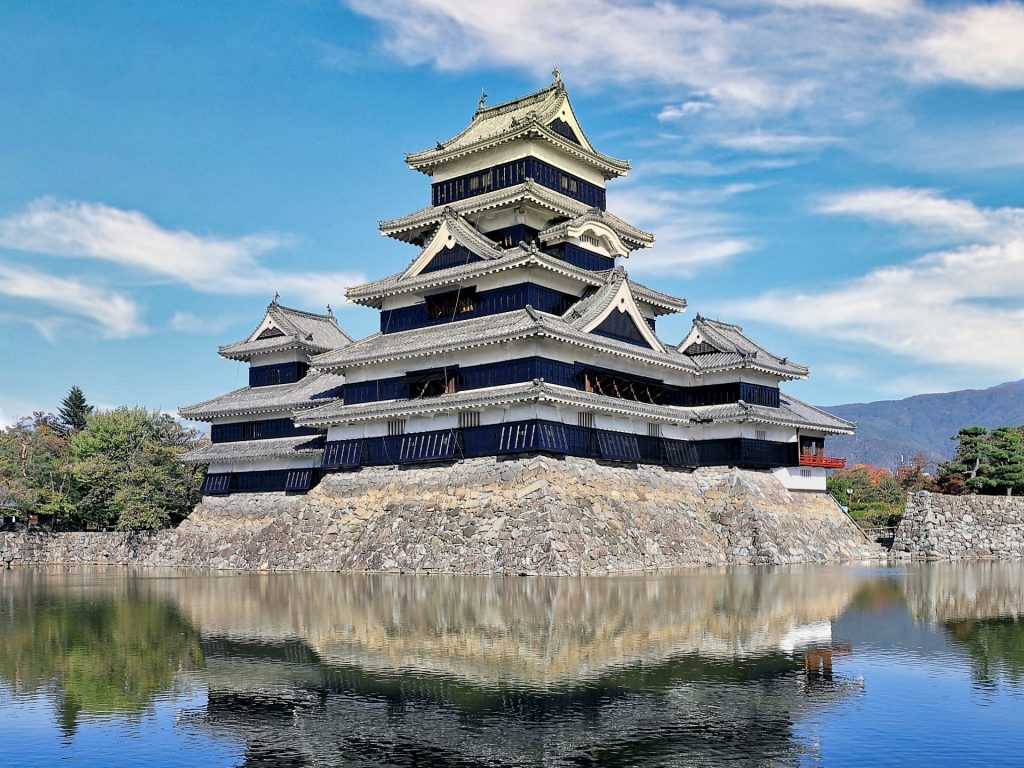
As a registered National Treasure, Matsumoto Castle is one of the region’s most important cultural assets. Constructed between 1594 and 1603, the existing building retains much of its original structure including the imposing stone foundation walls with notable periods of restoration in the 20th century. Set against the impressive backdrop of the Northern Alps, the castle dates back to the end of the Warring States Period with much of the original structure still intact. One of the most beautiful historic buildings in Japan, it is one of only two 6-storey castles remaining today – yet only exists due to the intervention of local residents who have saved it from destruction more than once. The castle is accessible throughout and plays host to a busy calendar of festival and events. No matter what time of year you’re in Matsumoto, a visit to the castle is something of a must-do.
NAWATE DORI & NAKAMACHI
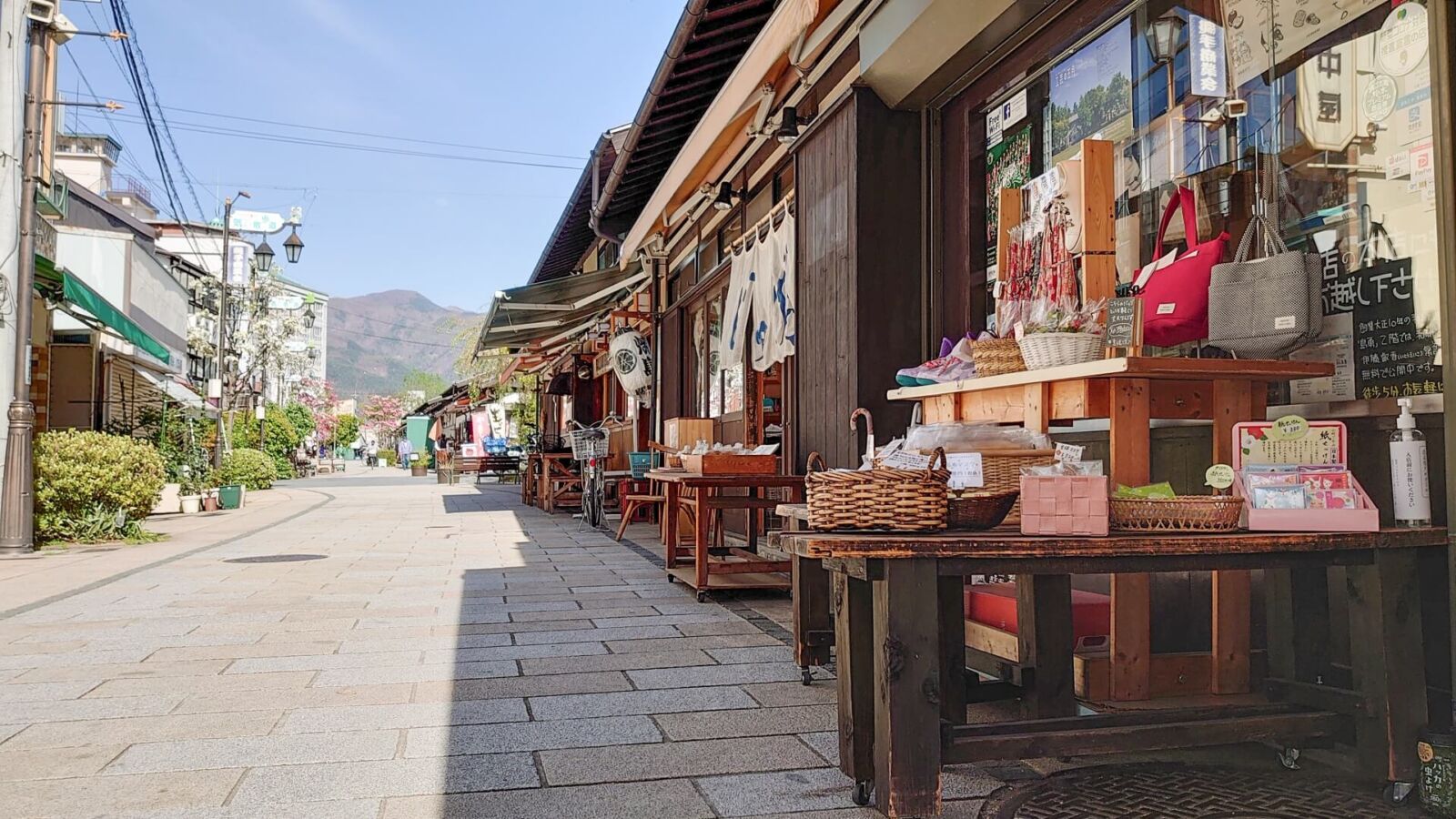
Located between the castle and Matsumoto Station, the historic shopping streets of Nawate and Nakamachi are home to some excellent craft stores, galleries, cafes and restaurants. Nawate-Dori or Nawate Street is a fun shopping area reminiscent of Edo Period shopping alley full of vendors selling food, knick-knacks antiques. Approximately 5-minutes walk from the castle, this small but cute precinct is one of the city’s most charming little discoveries. The street boasts some seriously good food vendors selling ‘soba’ and ‘udon’, ‘taiyaki’ and ‘senbei’ and is well-worth a stroll – especially for those frog-fans amongst us or if you’re searching for a unique souvenir or antique while in Japan.
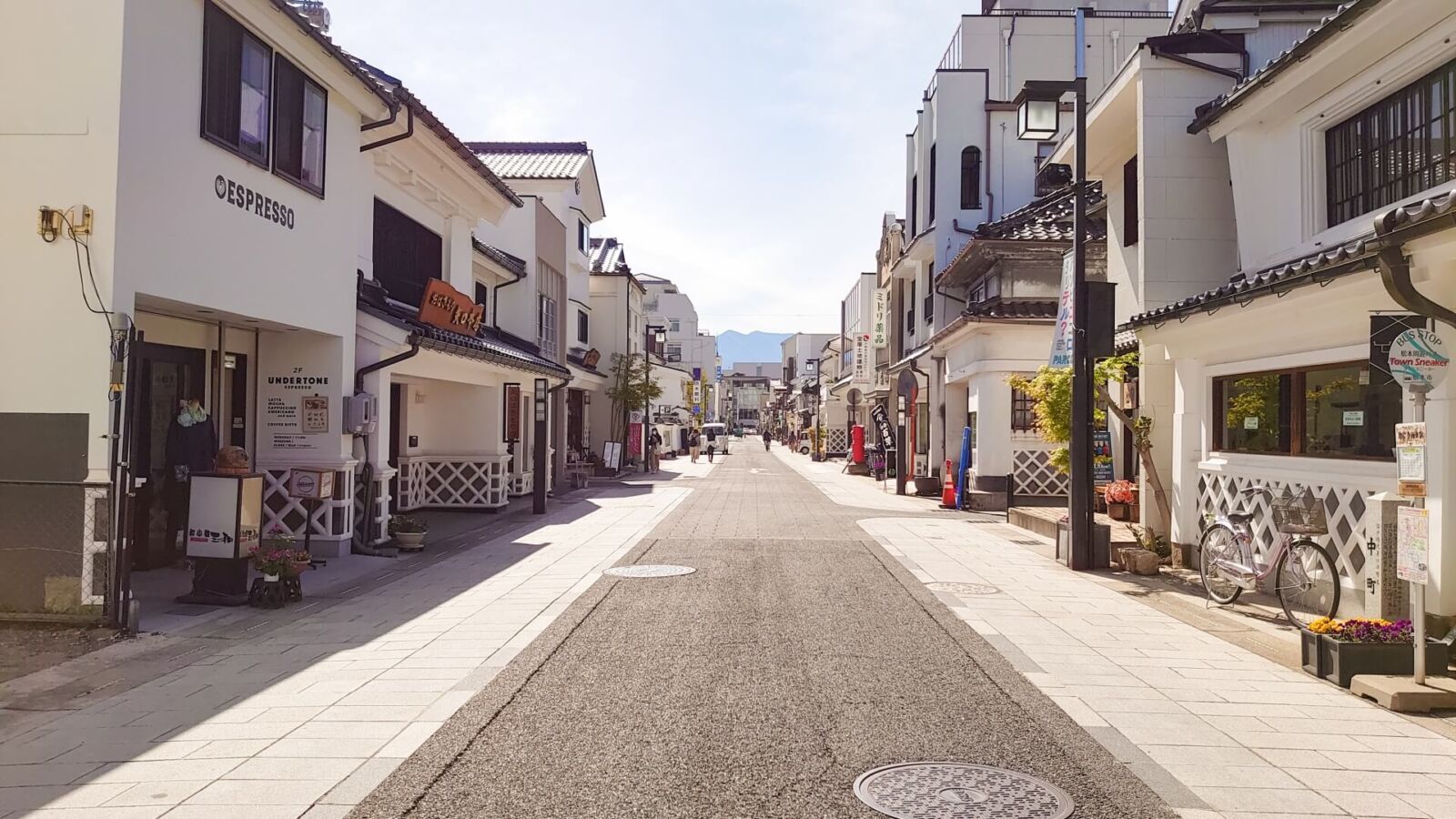
Directly across the Metoba River from Nawate Street is Nakamachi Street, a former merchant area characterized by its traditional storehouses called ‘kura’ that flank each side of the street. The distinctive white and black, criss-crossed pattern decorates the bottom half of the buildings, imbuing the street scene with a unique and pleasing character. The street is known for its many stores selling traditional crafts including lacquerware, pottery and woodcraft. Several restaurants, cafes, confectionaries, good coffee houses and Matsumoto Beer Brewery’s small store make Nakamachi and the surrounding side streets worth exploring.
MATSUMOTO CITY MUSEUM OF ART inc. KUSAMA YAYOI COLLECTION
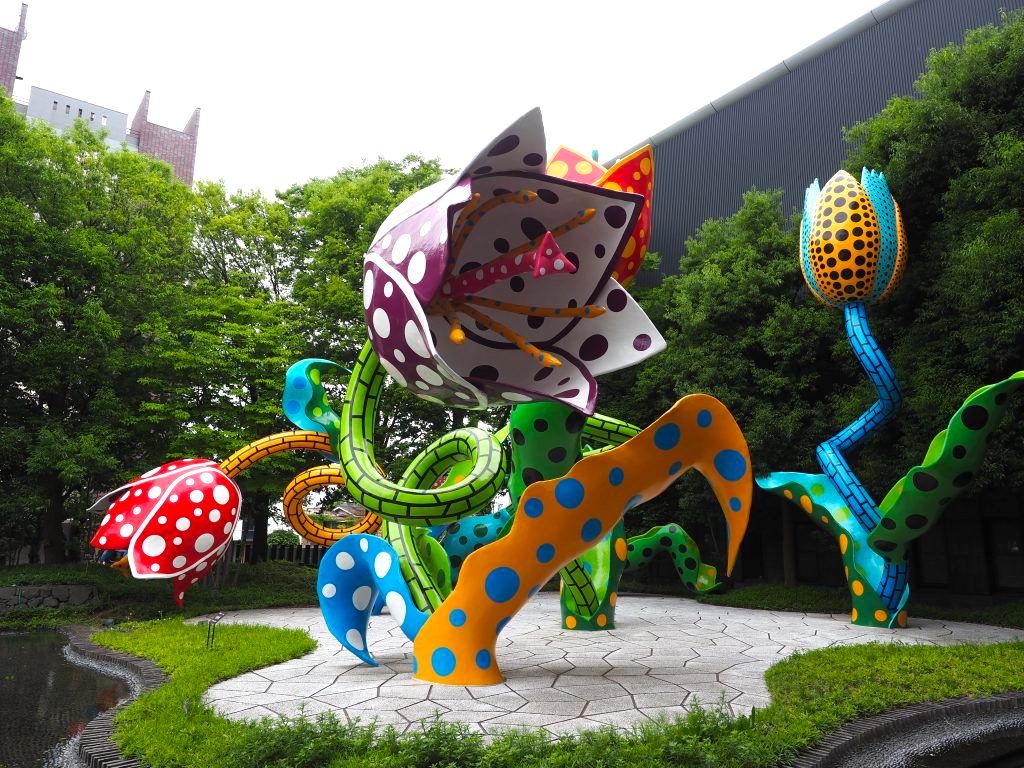
The Matsumoto City Museum of Art is best known for its permanent exhibition of artwork by the world-famous Japanese artist Yayoi Kusama who was born in Matsumoto. In fact, before you even step foot inside, you will be greeted by a colourful outdoor sculpture created by Kusama. The museum also features an exhibit of works by local artists and visiting exhibitions of other Japanese and international artists. But for international visitors, it is Kusama’s collection which is likely to hold the most interest. Although classically trained, Kusama’s defining style sits is heavily-influenced avant-garde, pop and conceptual art – of which, she is now a celebrated and pioneering artist. While you might not know her name, there’s a good chance you will recognise her artwork which is bright, playful and bold and uplifting.
SHOPPING, CAFES & RESTAURANTS
Though known for its historic importance, Matsumoto is also home to a burgeoning arts, music and food scene. Spurred by the international fame of Yayoi Kusama and the ‘Suzuki Method’ – a revolutionary music curriculum – both of which call Matsumoto home, the city’s profile as a creative hub is growing with many fantastic initiatives and independent stores opening-up each year. It’s well worth grabbing a coffee and just wandering the streets where you’re certain to find another great café, bookstore, independent designer, craft beer brewery or any one of the city’s many fantastic restaurants.
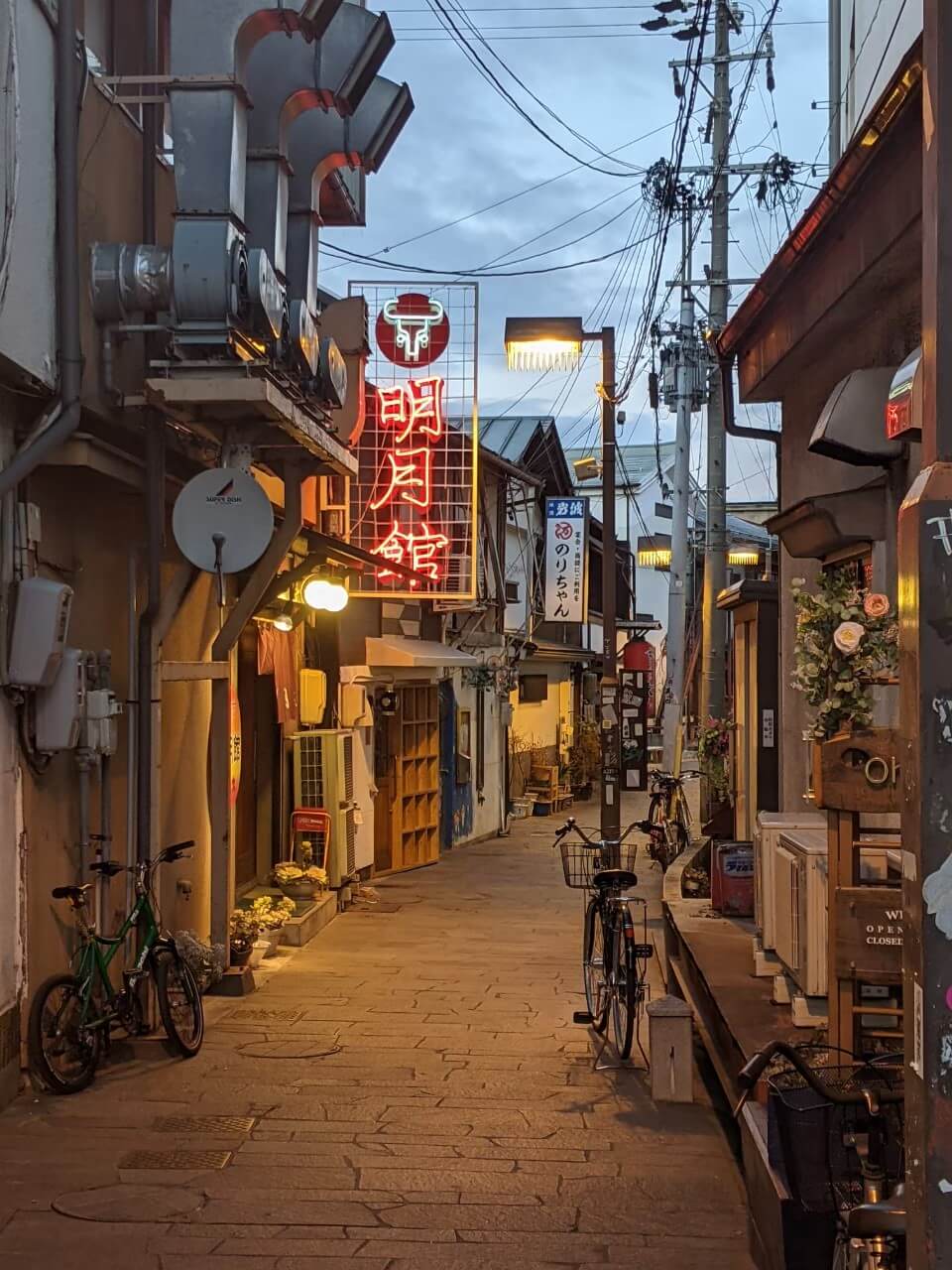
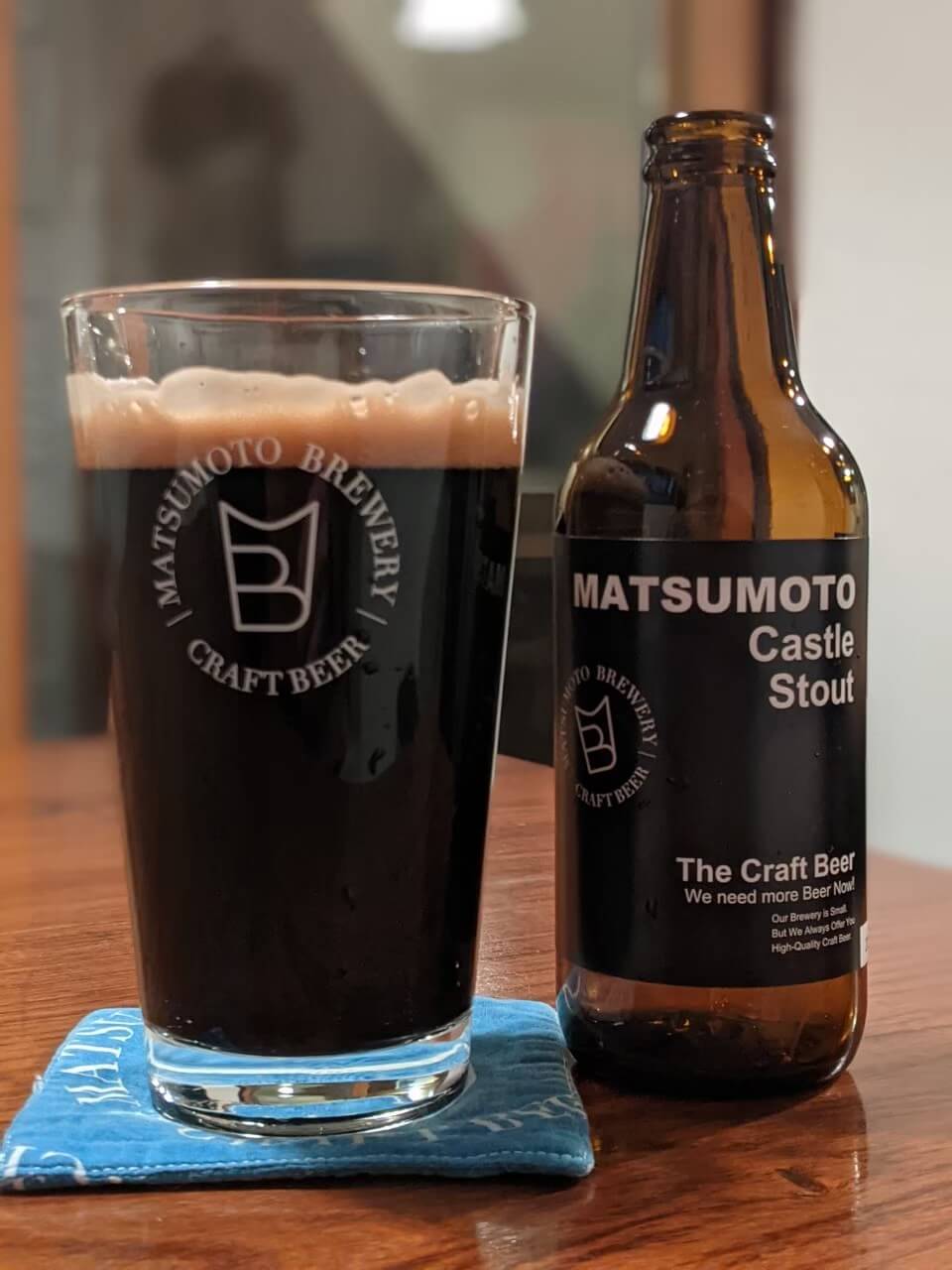
Over the past couple of years, Matsumoto has become a craft beer hotspot. There are now two breweries within the city: Matsumoto Brewery and Bacca Brewery, both of which are located within walking distance from Matsumoto Station. Matsumoto Brewery has two ‘tap rooms’, one located in the Shinmai Media Garden Building other in Nakamachi. Bacca Brewery is a nano-brewery that makes their beer right on the premises—in fact, you can see the brewing room right from the counter.

Opened in 2018 the Shinmai Media Garden is a multi-storey shopping, restaurant and office building in the heart of Matsumoto. There are 11 shops and restaurants in the building, with the Matsumoto Brewery Tap Room located on the third floor With multiple beers on tap along with a menu of tasty snacks including ‘gyoza’ (dumplings), and both indoor and outdoor seating on the terrace, enjoying a cold beer at the end of the day is great way to cap-off your exploration of the city as look down one of the main thoroughfares toward the North Alps.
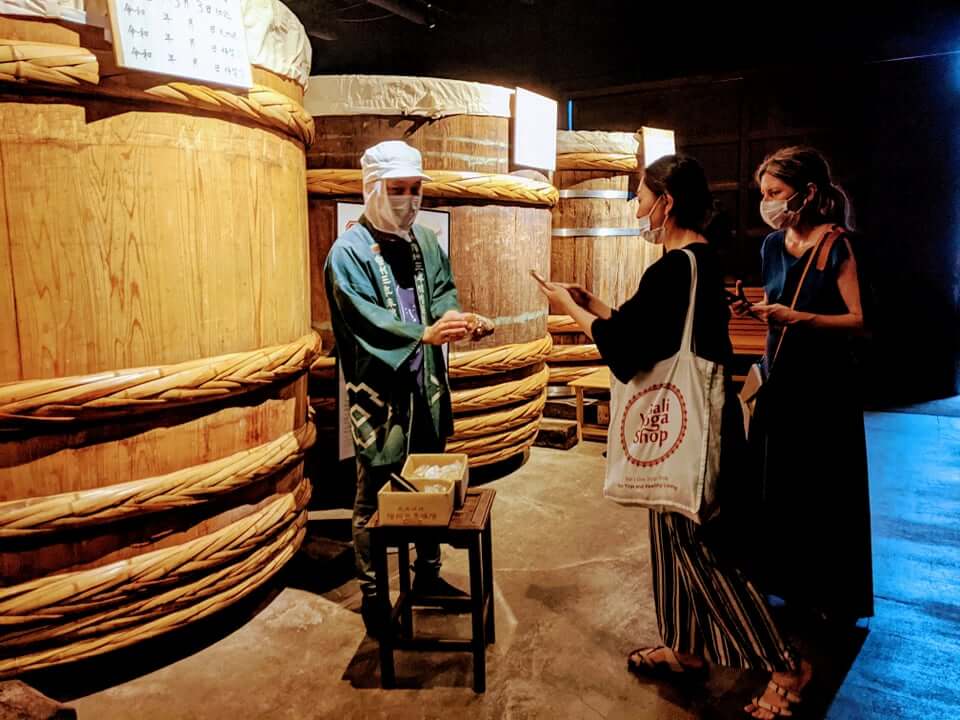
For visitors wanting to enjoy the signature staple of the region, Nagano is Japan's largest producer of 'miso' (fermented soybean paste) and there's no better place to enjoy it than at one of Matsumoto's oldest breweries, Ishii Miso. Operating since 1868, Ishii Miso is one of the few remaining breweries that still crafts its miso in the traditional way using wooden barrels and without use of modern methods to quicken the fermentation process, Ishii Miso produces some of the region’s best miso. The brewery's friendly staff are happy to produce a tour in English while the attached restaurant and front-store serve-up a delicious range of miso-based meals and products including paste fermented for up to twenty years.
FESTIVALS OF MATSUMOTO
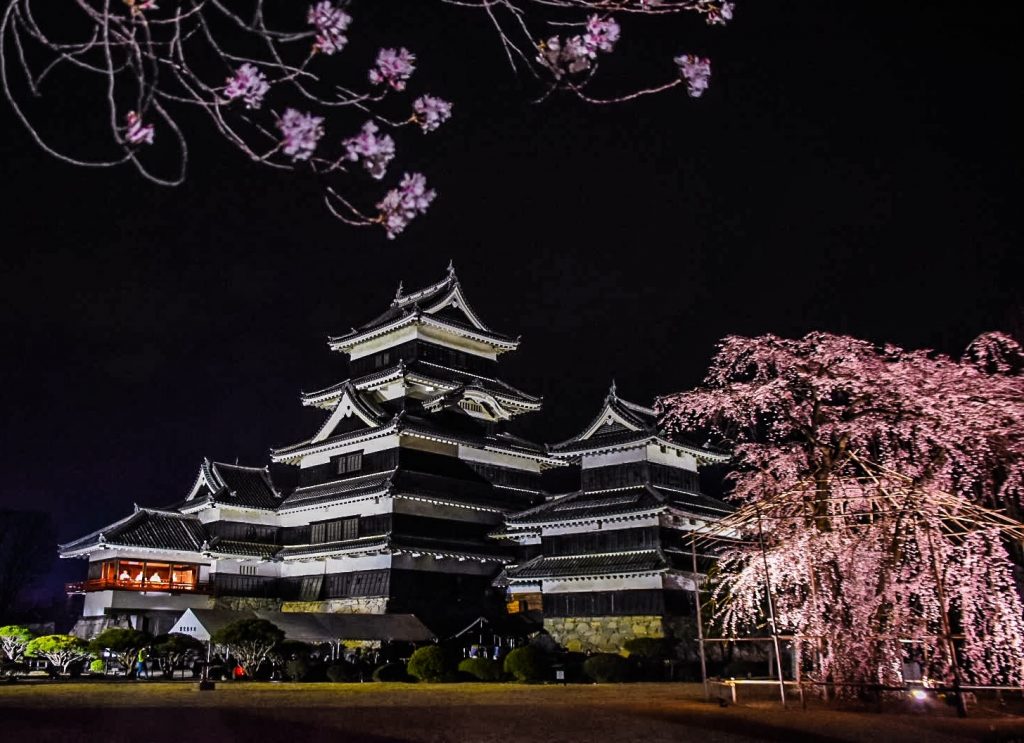
Matsumoto’s famous castle only survives due to the intervention of two notable local residents – Ishikawa Ryozo and Kobayashi Unari – who gathered public support and funds to purchase the castle and save it from destruction in the late 19th century before advocating for its restoration in the early 20th century. Thanks to them, and the efforts of many other local people, the castle survives to this day. Very much the peoples castle, it is no surprise that many of Matsumoto’s yearly festivals are centred around it. Here are just a few:
New Year Celebration / first week of January / 10:00 to 15:00 / admission is free
‘Taiko’ (traditional) drums boom as the gates open, welcoming visitors into the castle grounds to celebrate the New Year together with hot ‘amazake’ (non-alcoholic, sweet sake), traditional performances, and souvenirs available to buy.
Ice Carving Festival / first week of February / 18:00 to 23:30 / admission is free
Against the backdrop of the illuminated castle, professional ice sculptors carve beautiful statues with the public looking on. If you want to witness the carving please ensure you are there on the evening of the first night. The sculptures will then stay in place for viewing by the public for several days.
Night-time Cherry Blossom Viewing & Corridor of Lights / April / 17:30 to 21:00 / admission is free
Held each year to celebrate the bloom of Matsumoto’s cherry blossoms, the exact timing of this event is a little tricky to predict. As the weather warms and the bloom can be forecast with some level of certainty, the official beginning of the cherry blossom season will be announced and the festivals will begin three days later. The Night-time Cherry Blossom Viewing will run for eight days and Corridor of Lights will run for ten days.
Taiko Drum Festival / late-July / 17:30 to 21:00 / admission is free
Taking place over two days in the castle grounds, ‘taiko’ drum performances thrill the crowd and hark back to the castle’s origin as a strategic battlement and field of conflict.
Matsumoto Bon Bon Festival / August / 17:00 to 21:30 / admission is free
Taking place on the first Saturday of August the Matsumoto Bon Bon Festival sees residents take to the streets, laugh, chat and dance! Dressed in traditional clothing and (some in) crazy costumes, the mood is infectious as troupes move through the streets, inviting onlookers to join the revelry. Great fun and not to be missed!
These are just a handful of the festivals taking place year. For more festival and other suggestions to what’s on offer in the city, let’s jump to:
25 THINGS TO DO AROUND MATSUMOTO & WHERE TO STAY
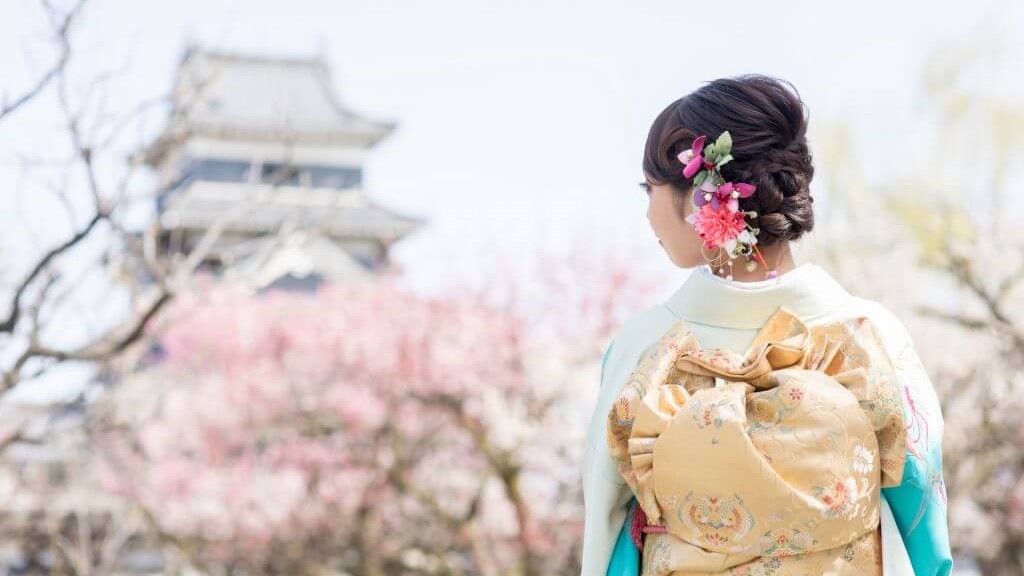
Many if not most visitors heading to Matsumoto are drawn by its iconic castle, one of the few remaining original castles in Japan and a registered National Treasure. Once in Matsumoto, visitors discover a historic and pleasant city with a thriving folk craft, art and dining scene. So while it’s castle that might attract people to visit, it’s everything else that the city has to offer that makes them want to stay. Our ’25 Things to Do Around Matsumoto & Where to Stay’ page has lots of great tips and suggestions of things to do, including links to accommodation listings, in and around Matsumoto.
GETTING TO & FROM MATSUMOTO
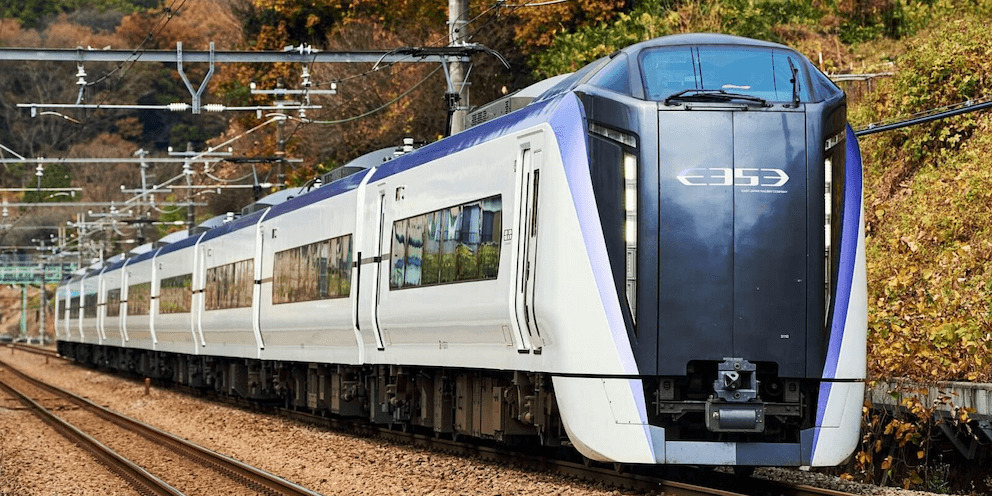
Many if not most visitors heading to Matsumoto do so using train services running to and from Matsumoto Station. While Matsumoto Station isn’t a stop on any Shinkansen/Bullet Train line, there are several limited express services that connect the city to other major destinations quickly and comfortably. Our ‘How To Get To Matsumoto’ page provides detailed information about how to reach the city from Tokyo, Nagano, Nagoya and other popular destinations. For international visitors, there are two rapid services that will be of interest:
1 / Limited Express 'Shinano': running from Nagoya to Nagano via Matsumoto, the Limited Express 'Shinano' is one of Japan’s most scenic train lines connecting the largest city in Central Japan with the two largest cities in Nagano Prefecture. Services also stop at Nakatsugawa Station and Kiso-Fukushima Station – gateways to the southern and central Kiso Valley including the Nakasendo Trail.
2 / Limited Express 'Azusa': running from Shinjuku Station in Tokyo, the Limited Express Azusa connects the capital to Matsumoto. Services running frequently throughout the day and include a stop at Shiojiri – another convenient launching point from where to explore southern Nagano Prefecture.
SUGGESTED DAY-TRIPS & NEXT DESTINATIONS FROM MATSUMOTO
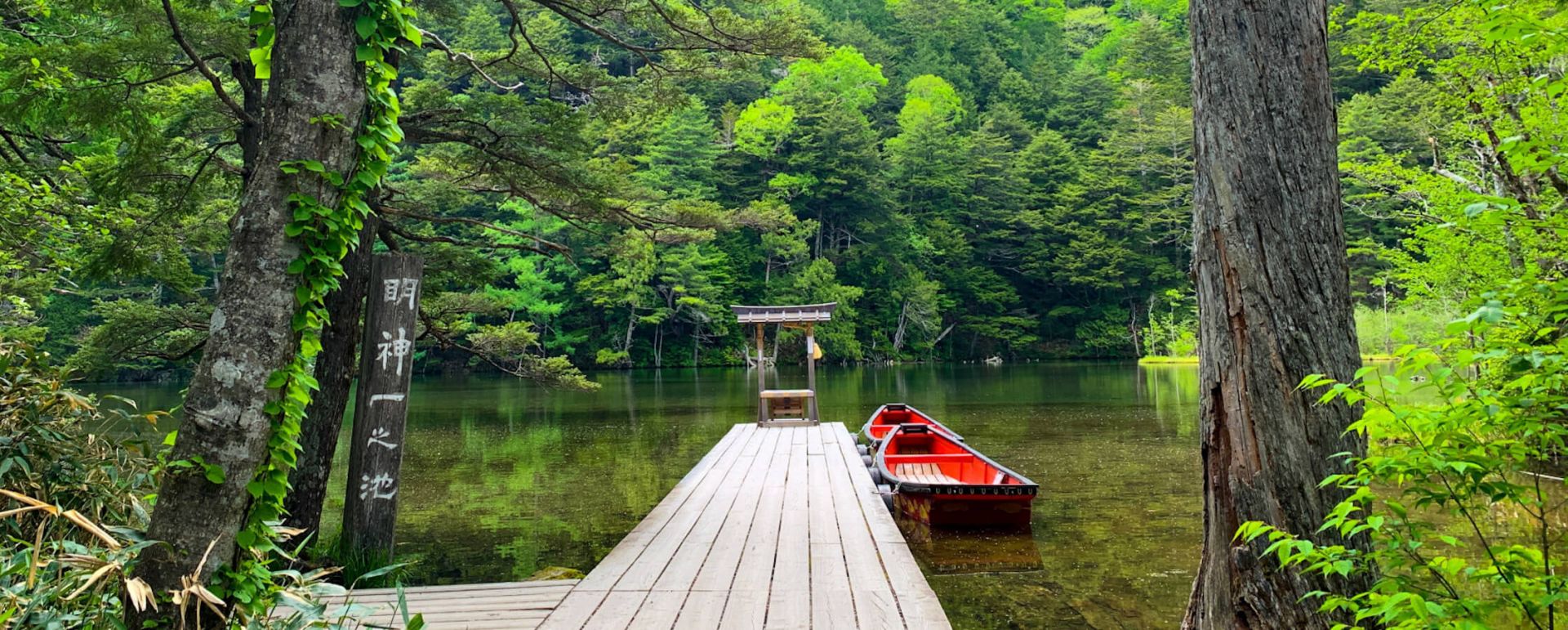
Readily accessible from Tokyo, Nagano and Nagoya, Matsumoto is an ideal launching point from where to explore the best of Central Japan. These are just a few of the fantastic destinations that can be visited from Matsumoto as you continue your adventure around Japan:
KAMIKOCHI / April to November
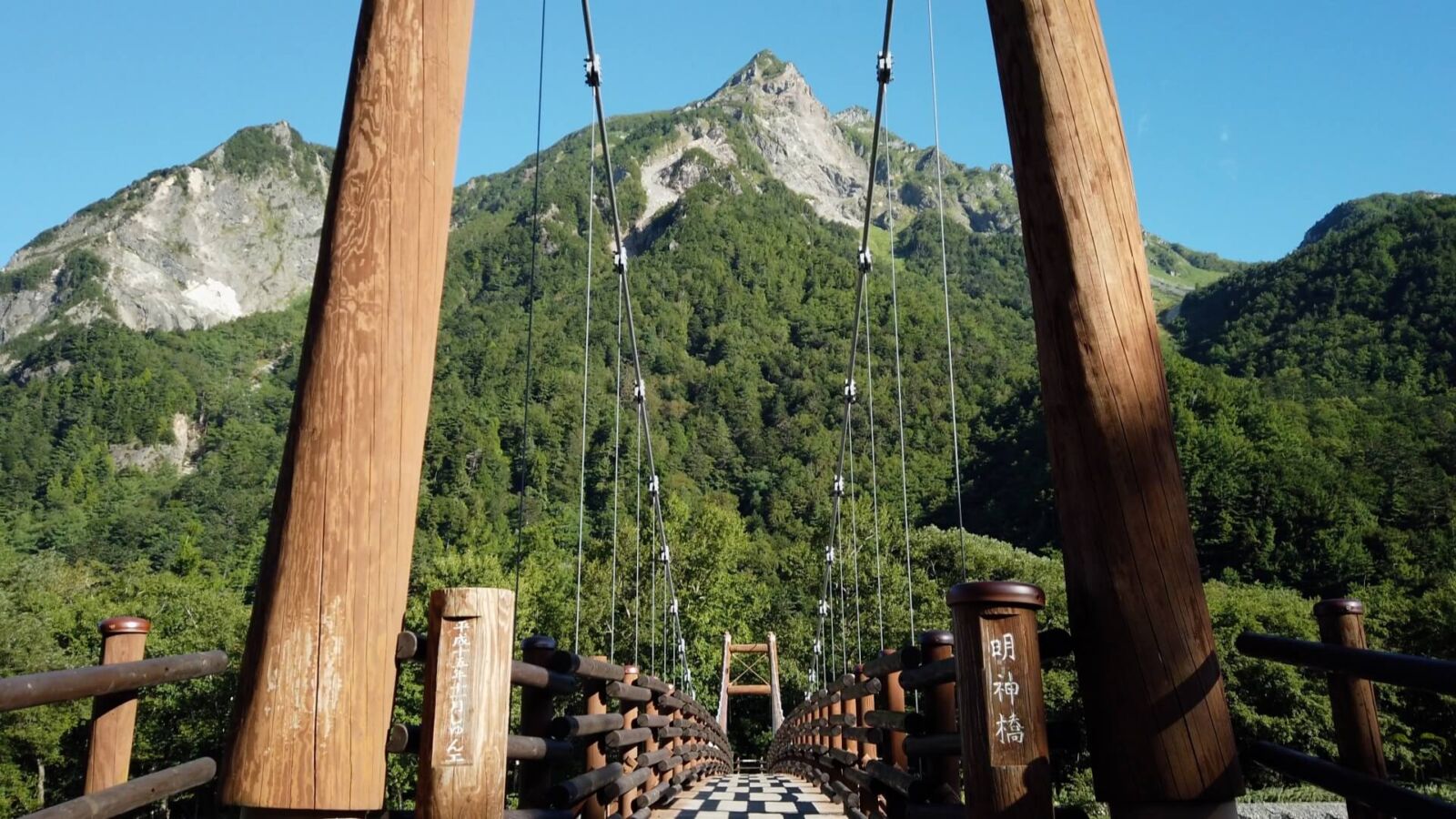
Best Selling
1-Day Tour from Nagano and Matsumoto: Kamikochi & Matsumoto Castle
- Spots:
- Pick-up:
- Drop-off:
Approximately 70-minutes drive from the centre of Matsumoto, the alpine valley of Kamikochi is one of Central Japan’s most rewarding experiences. Situated in the Chubu Sangaku National Park, Kamikochi is a pristine and beautiful alpine valley open to the public from mid-April until mid-November each year. The valley follows the Azusa River while some of Japan’s tallest mountain peaks rise to over 3000 meters above. From the Kamikochi Bus Terminal, walking trails span-out along the valley – suitable to anyone of reasonable fitness – before more advanced hiking and mountaineering trails lead into the mountains. Considered the jewel of the Chubu Sangaku National Park, visiting Kamikochi is one of Nagano’s most memorable experiences – a truly special place of natural and spiritual importance.
TAKAYAMA / all year round
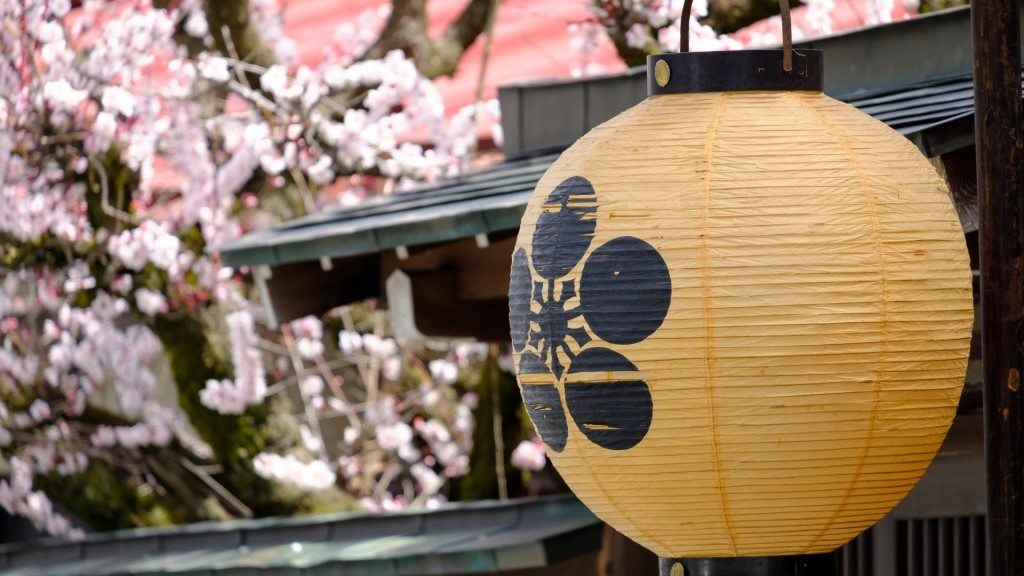
Best Selling
1-Day Tour from Takayama: Explore Scenic Old Japan in Takayama and Shirakawa-go
- Spots:
- Pick-up:
- Drop-off:
Lying on the side of the North Alps from Matsumoto, Takayama is a popular destination famous for the preservation of its Edo Period (1603-1868) historic centre. Takayama is equally well-known for its food culture including Hida beef – considered some of the best in Japan – and its famous beef sushi, Takayama ramen and more! For foodies, Takayama is a real treat. If you have your eye on a particular restaurant, make sure to book in advance. Try to avoid the middle of the day – between 11:00 and 15:00 – when large tour buses arrive and crowd the small historic area with tourists.
AZUMINO / all year round
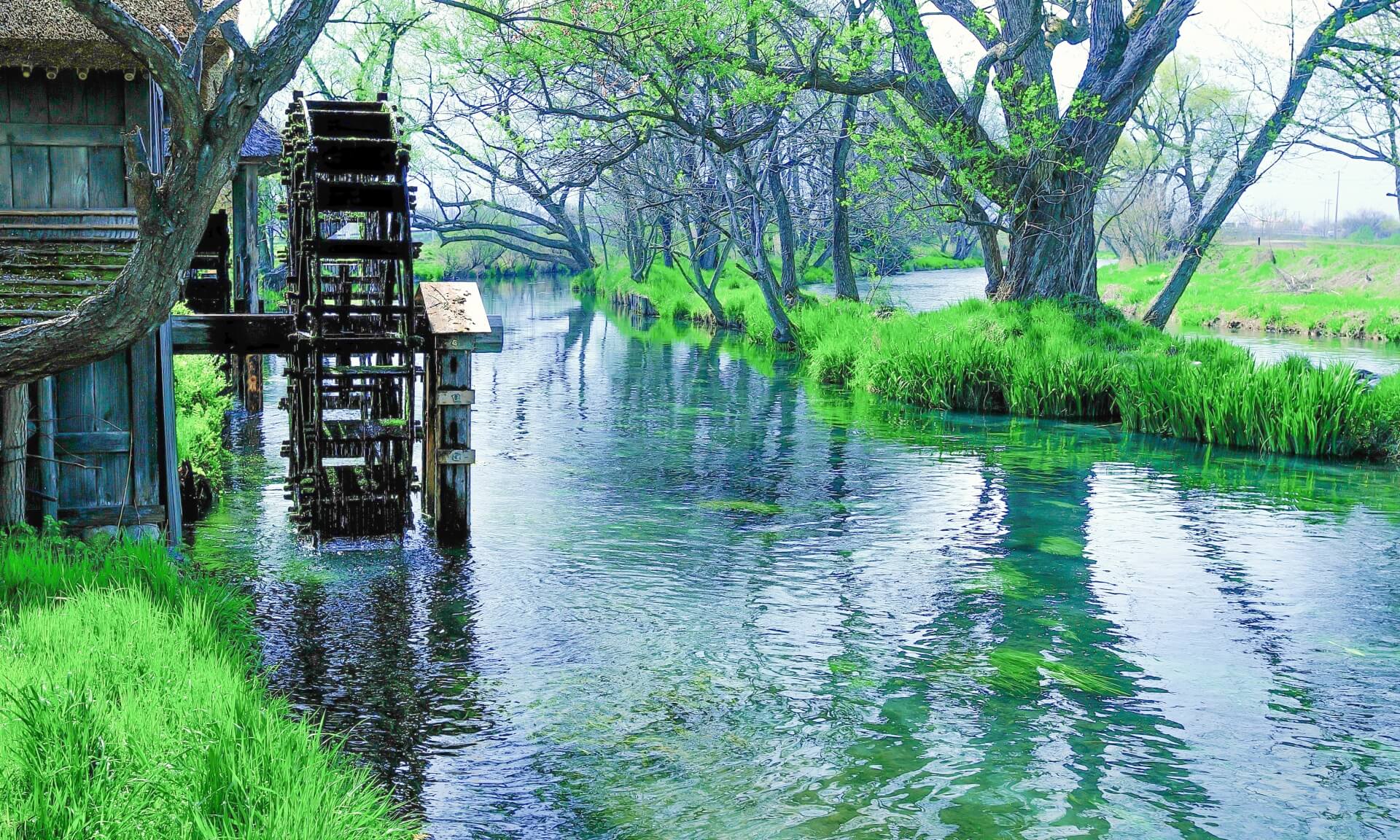
[START FROM NAGANO/MATSUMOTO] Private Wasabi-Picking Experience & Kamikochi
- Spots:
- Pick-up:
- Drop-off:
Located just outside of Matsumoto, Azumino is a tranquil rural enclave in the shadow of the North Alps. Home to scenic farmlands producing some of Nagano’s best fruit and vegetables, exploring Azumino through summer and autumn is a great way to enjoy the harvest including fruit-picking at one of the many local farms. Azumino’s Daio Wasabi Farm is one of Japan’s largest producer of wasabi and in itself, a beautiful destination well-worth visiting. Known in the West for its nasal-clearing heat, real wasabi is a much more subtle and highly versatile taste than many people realize. Wasabi requires large amounts of clear water to grow and the streams and pools that flow across the farm create a picturesque and idyllic setting in which to wander.
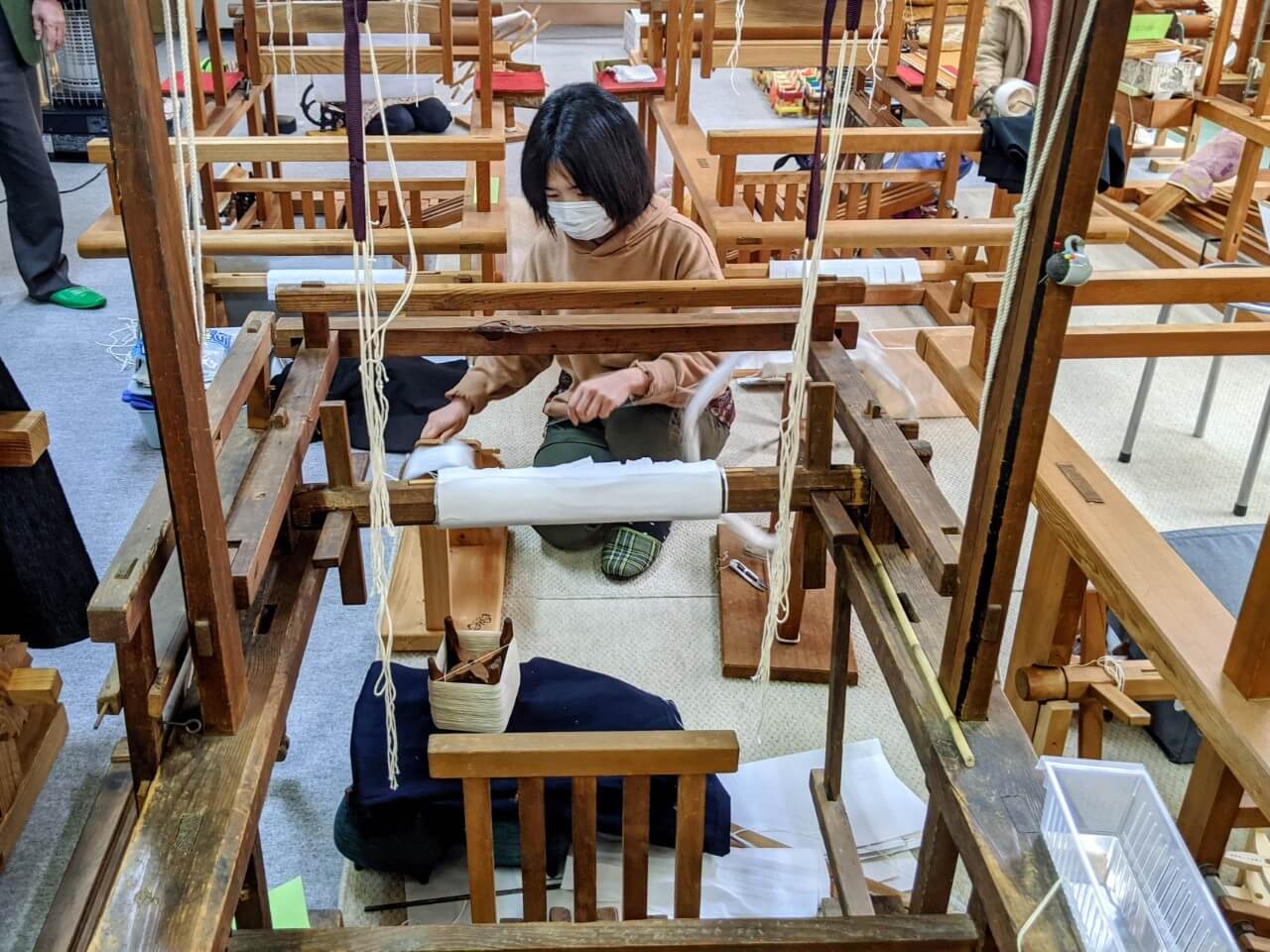
In recent years, a number of galleries and museums have opened in the area with restaurants and cafes complementing them perfectly. The region has a strong tradition of folk crafts including a re-emerging silk industry and a growing reputation for holistic retreats and experiences. For more tips and suggestions, please refer to our ’20 Thing to Do in & Around Azumino’ page.
HAKUBA & SKI RESORTS OF NAGANO / December to April
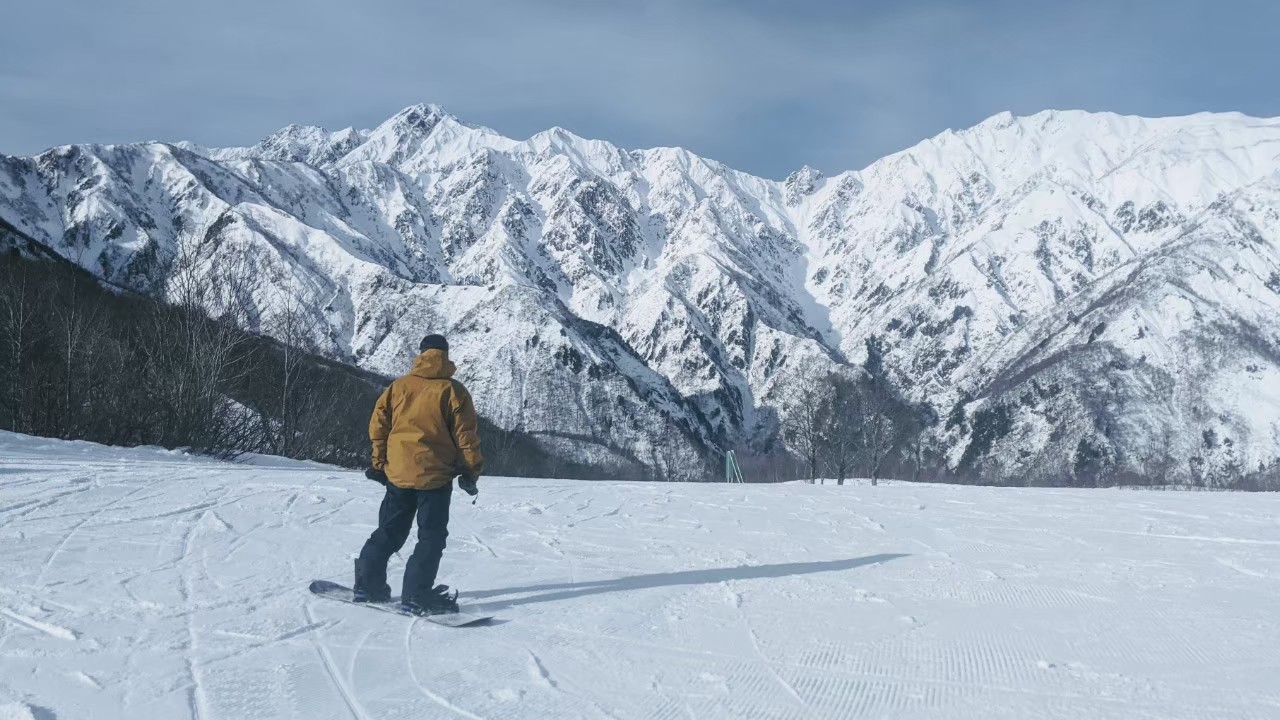

Nagano is home to around eighty resorts however only a few were lucky enough to host events including Hakuba Happo One. Several events took place in and around Happo One, establishing Hakuba’s global profile. To this day, the resorts of Hakuba can lay claim to being Nagano’s most international and popular. Plenty to keep you entertained on your winter adventure!
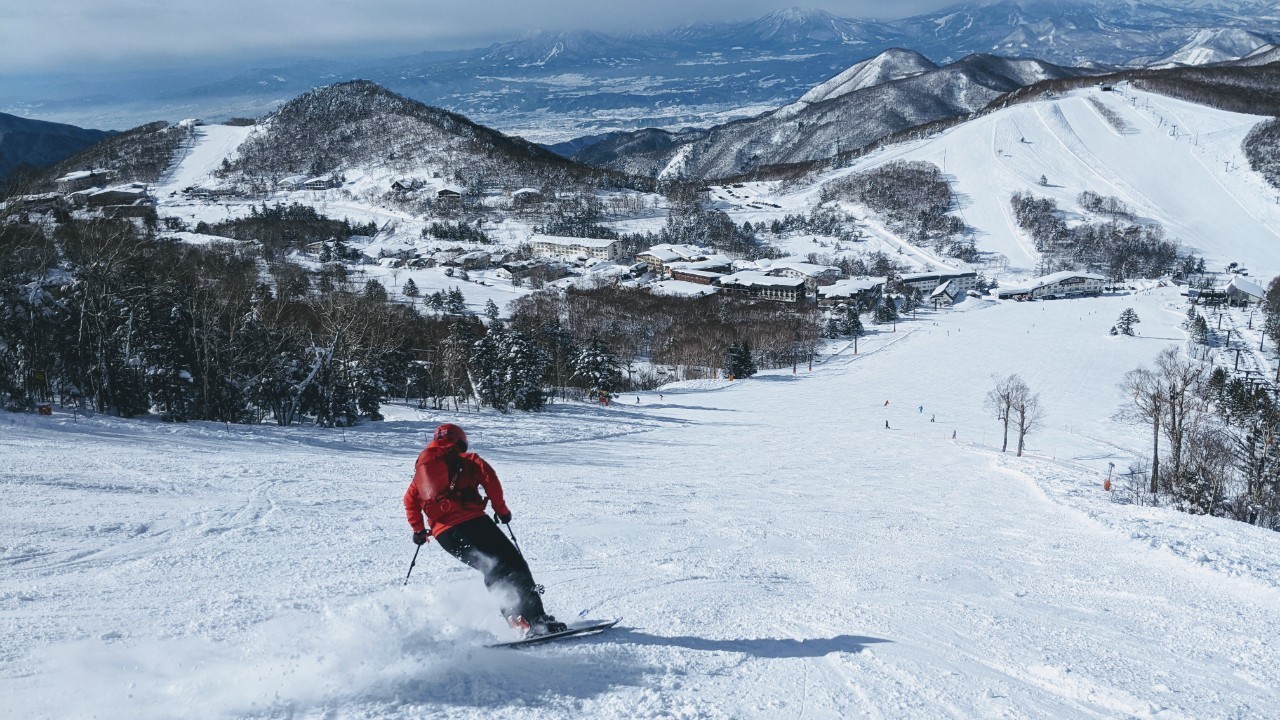
The Nagano Winter Olympics were the first to include snowboarding as a medalled sport, with all snowboarding events taking place in Shiga Kogen – Japan’s largest and highest ski resort. Boasting Nagano’s longest season and most reliable snow conditions – given its higher altitude and prevailing weather conditions – Shiga is another resort quickly coming to the attention of international visitors.
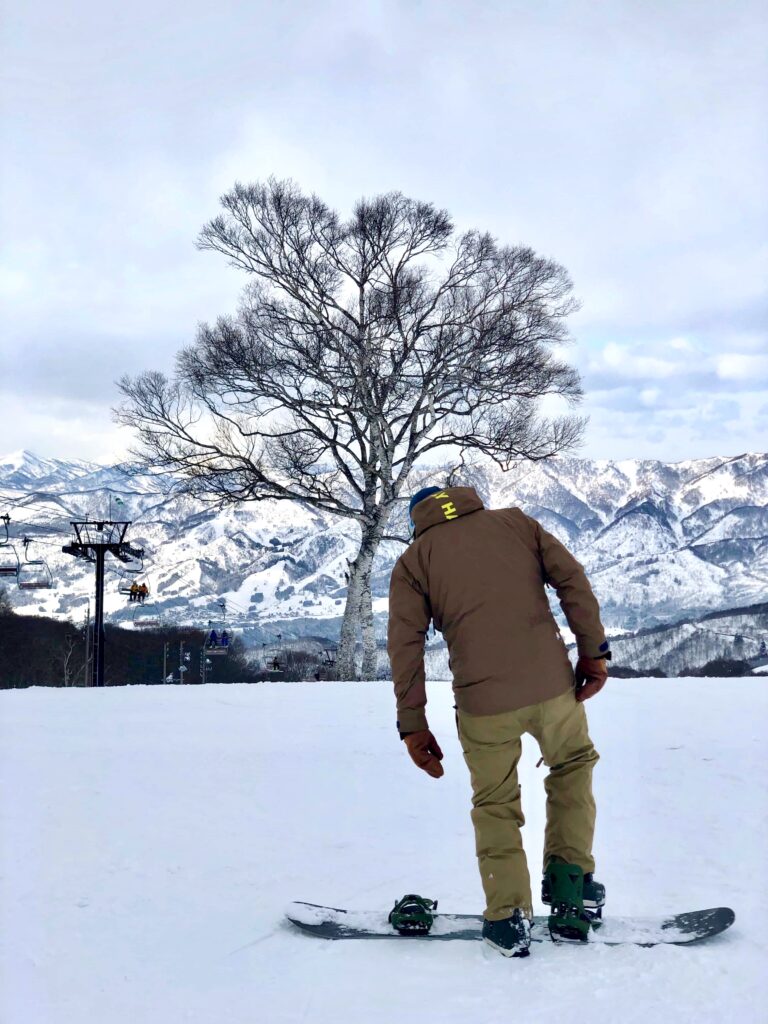
Less than an hours drive from Shiga, Nozawa Onsen is one of Nagano’s most popular resorts – offering skiers and boarders around 300 hectares of train between 565 and 1650 metres. Also known for its great powder and setup for snowboarders, Nozawa is a lively resort serviced by a large village full of accommodation, restaurants and bars and ‘onsen’ (hot springs), Nozawa’s reputation is as much based on what happens off the mountain.
KISO ONTAKE MOUNTAIN RANGE & KISO VALLEY / all year round
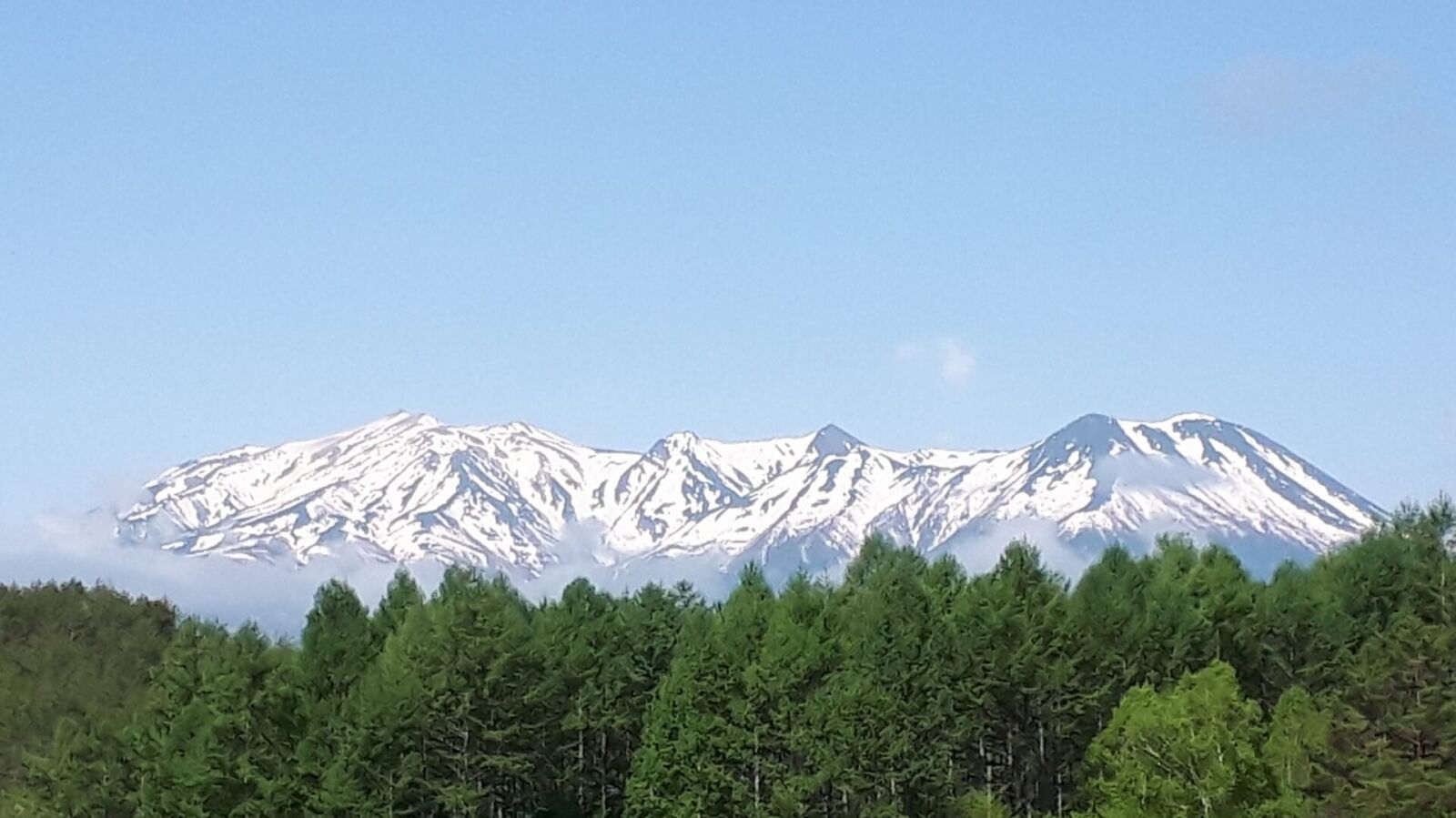
Popular
1-Day Tour from Nagano and Matsumoto: Step into the Past on the Nakasendo
- Spots:
- Pick-up:
- Drop-off:
The Kiso Ontake Mountain Range is one of several dramatic and beautiful alpine areas covering Central Japan. Dominated by the imposing volcanic peak of Mount Ontake – Japan’s second highest volcano behind Fuji – the region is known for its pristine nature, lush landscapes and stunningly-coloured water of its rivers and gorges. The geography of the mountain range including its rugged and high peaks, dense forests and deep gorge made the region somewhat inaccessible until modern times, and in doing so, allowed a strong and independent culture to develop; and though modern infrastructure has now opened Kiso Ontake to the wider world, it retains much of its historic character and maintains many traditions. Blessed with rare natural beauty the Kiso Ontake Mountain Range includes the stunning Kiso Valley and the most famous section of the Nakasendo, including the beautiful postal towns of Narai, Magome and Tsumago, which can still be walked today.
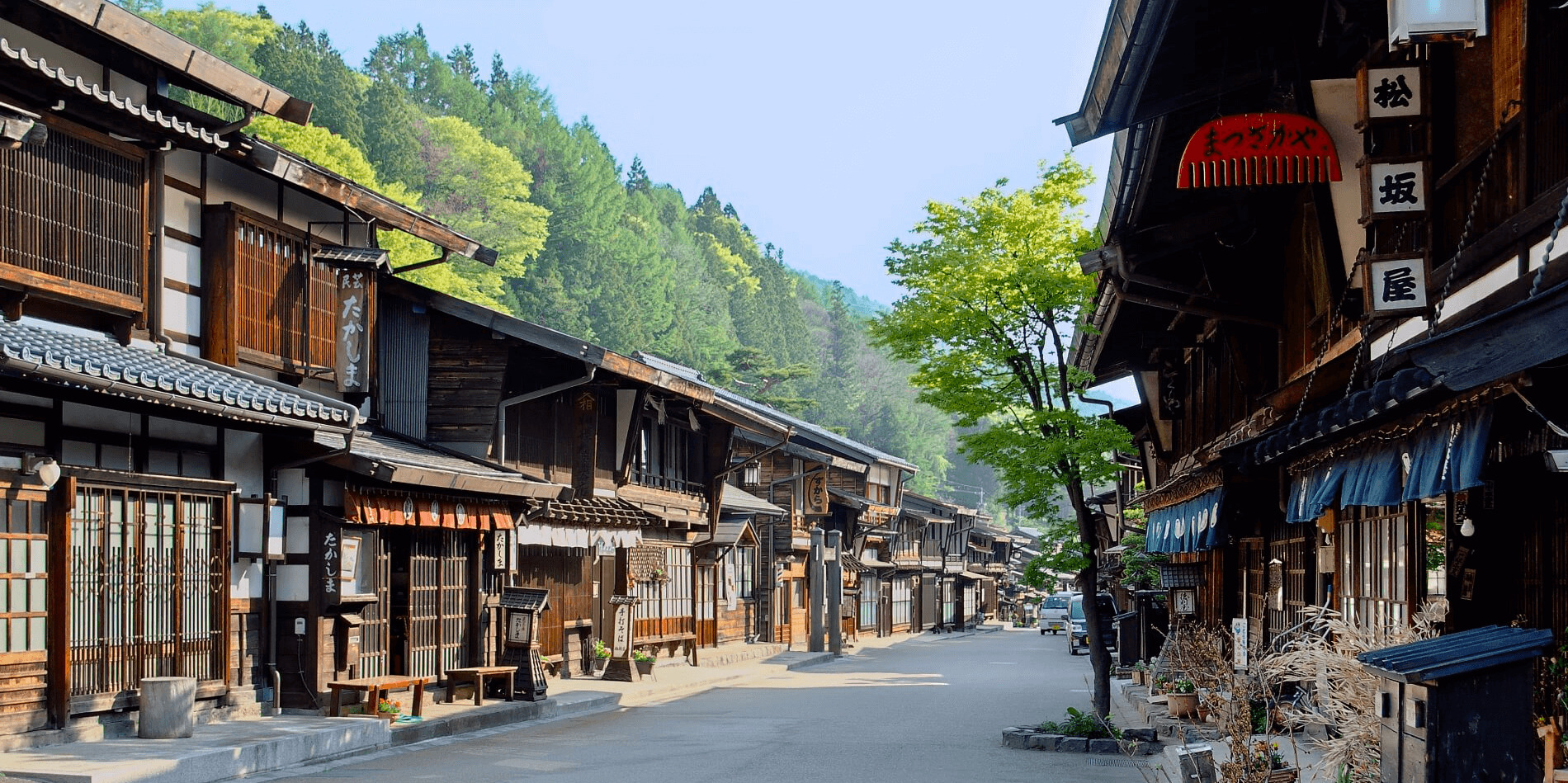
Accessible from Matsumoto using the Limited Express 'Shinano' – to either Kiso-Fukushima Station or Nakatsugawa Station – the Nakasendo Trail traces a historic highway that once connected Tokyo – then called Edo – and Kyoto during the Edo Period (1603-1868). Though much of the route is now gone, several sections can still be walked including the picturesque ‘Kisoji’, the section of road that runs through the Kiso Valley. Serviced by many ‘juku’ or post towns, the Kisoji is known for the historic preservation of Narai-juku, Magome-juku and Tsumago-juku. These picturesque little towns are cared for by local residents who strive to maintain their traditional aesthetic and ways of life. The journey on-foot between the towns is a lovely experience, particularly in spring and autumn.
TATEYAMA-KUROBE ALPINE ROUTE / April to November

Popular
[Spring Only] 1-Day Tour from Nagano: Snow Walls of Tateyama-Kurobe Alpine Route
- Spots:
- Pick-up:
- Drop-off:
Heralded as one of Japan’s best experiences, traversing the Tateyama-Kurobe Alpine Route takes approximately 6 hours without allowing for time to stop and enjoy all of its stunning sights. In reality, undertaking a visit to the Alpine Route is therefore a full-day activity. Visitors can start from Toyama via Tateyama Station or Nagano via Ogizawa Station, and choose to finish on the other side or return to their point of origin. A series of mountain transports including trolley buses, cable cars, a ropeway, and coaches transport visitors to and from Murodo Station – which at 2540 meters is the highest station in Japan. Open from mid-April to mid-November, the Alpine Route is most famous for its immense snow walls which, at their peak, ascend 20 meters above the road below. The walls are at their best from the opening day in April until late-June, after which outstanding hiking is available through summer and autumn, climaxing with stunning autumn colours in October until the route closes again in November.
JIGOKUDANI MONKEY PARK / all year round
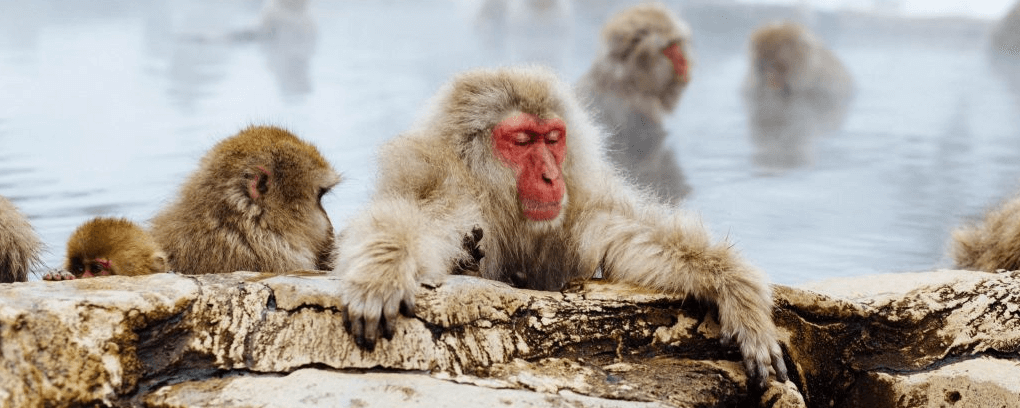
Finally, no visit to Nagano Prefecture is of course complete with a visit to its famous hot spring-loving monkeys! The Jigokudani Monkey Park lies around 50 to 60-minutes from the centre of Nagano City – home to the only troop of monkeys in the world known to enjoy soaking in natural thermal waters. Most famous for this behaviour in winter, the monkeys come to the park all year round, attracting visitors from all over the world. Located in the Yamanouchi area of Nagano, the area around the park is known for its many onsen guesthouses, farmlands and access to Joshinetsu Kogen National Park including Shiga Kogen – Japan’s largest ski resort. While it might be the monkeys that draws you to Yamanouchi, we recommend going slow and enjoying the comfort and relaxation of a traditional ‘ryokan’ (guesthouse), an indulgent hot spring and food sourced directly from the local farms.
TOURS AND CHARTERS FROM MATSUMOTO
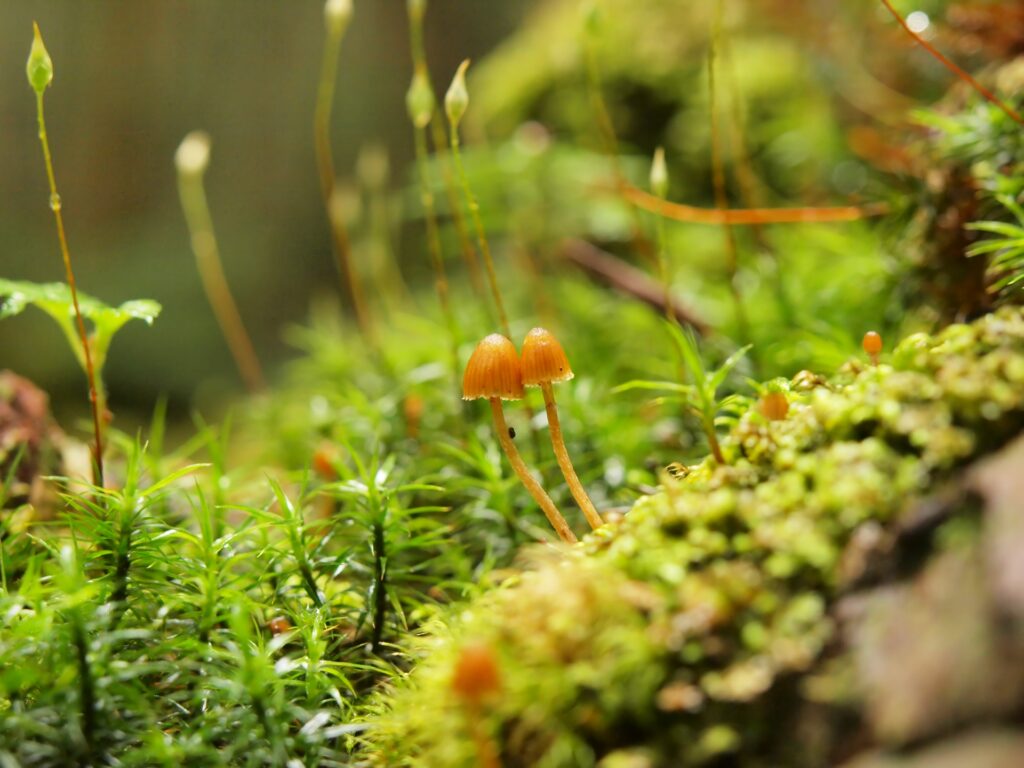
Based in Central Japan and operating all-year-round, we offer multiple highly entertaining group-tours from Matsumoto that are sure to please. All tours are led by locally-based guides and are formulated to show you the best of the region. Our tours are fun, interactive and family-friendly. For more information, or to book a tour, click on the banner or button below.
Best Selling
1-Day Tour from Nagano and Matsumoto: Kamikochi & Matsumoto Castle
- Spots:
- Pick-up:
- Drop-off:
This must-do tour combines a visit to Matsumoto Castle, one of Japan's best remaining original castles, with a trip to the gem of the Japanese Alps, Kamikochi. Making what would otherwise be a complicated journey easy, or tour vehicles will be with you the whole day to simplify the process. Operating from April until November, any season is a good time to come and see what this dynamic city has to offer.
[START FROM NAGANO/MATSUMOTO] Private Kamikochi Tour
- Spots:
- Pick-up:
- Drop-off:
For those looking for a more personalized experience, our private tour of Kamikochi will give you a similar itinerary to the above group tour but with the whole day just for your group! Perfect for larger groups and those who want to move at their own pace, you will have the undivided attention of your guide.
Popular
1-Day Tour from Nagano and Matsumoto: Step into the Past on the Nakasendo
- Spots:
- Pick-up:
- Drop-off:
Head to the historic Nakasendo Trail in the southern regions of the Kiso Valley on this walking tour. With an 8km walk between the well preserved towns of Tsumago and Magome, you will get a chance to stretch your legs on this ancient road and take in the beautiful nature of central Japan. With pick up from Nagano and Matsumoto, it is easy to join this tour no matter where you are in the region.
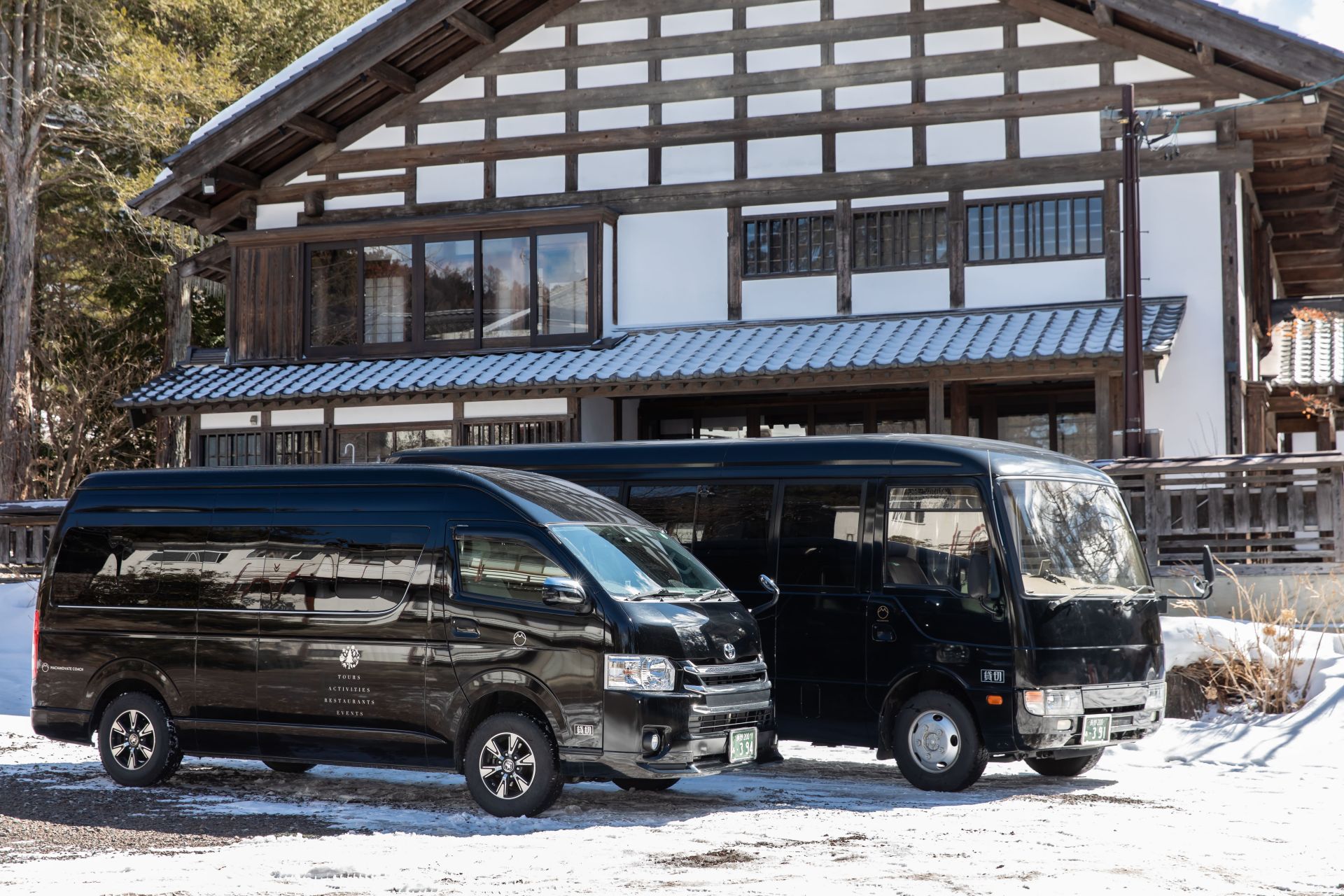
Of course, we also offer private tours and transport in and around the Matsumoto/Kamikochi area, and other regional destinations. Our drivers and vehicles are fully certified, allowing us to transport you to and from your preferred destinations in combination with any activity that suits your schedule. All vehicles are well-maintained and in good condition, allowing you to relax and enjoy your ride to wherever you are going.
We can arrange both private tours with an English-speaking guide or a private charter, including a private vehicle and driver but without a guide. We’d love to be part of your adventure in Central Japan and help you discover even more!














